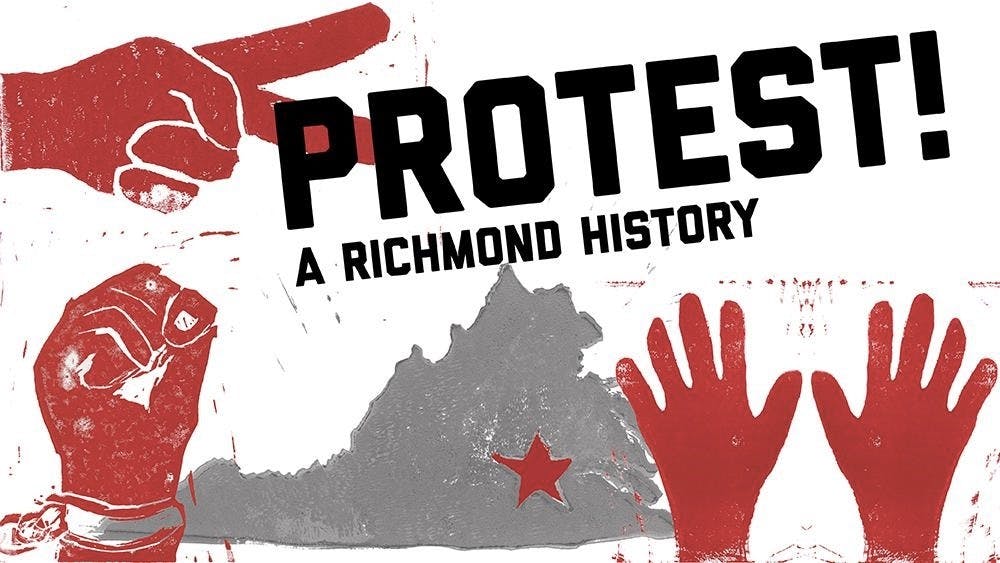On Feb. 23, 1960, Ruth Tinsley was forcibly dragged by police officers outside the Thalhimers building in Richmond. As the officers carried her, Malcolm O. Carpenter photographed them, capturing the moment that later became an important image of the civil rights movement.
This year, students from the University of Richmond American studies department used those photographs along with other images of dissent in "PROTEST! A Richmond History," an exhibition on display at UR Downtown until September.

Nicole Sackley, an associate professor of history and American studies, led the 12 students in her capstone course this semester in their curation of the exhibit. Sackley said she had begun thinking about dissent as a topic when she finished the course the last time she taught it, in 2016.
"It was the moment of Black Lives Matter, so I thought, protest!” Sackley said. “I had no idea at the time how relevant that would be. This was before the election of Donald Trump and the Women’s March and before March for Our Lives. We are in a protest moment, and we walked into it.”
Over the course of eight weeks, students surveyed more than 100 protests in Richmond and eventually decided on 26 to highlight, spanning five topics: Racial Justice, Gender and LGBTQ Rights, Economic Justice, War and Peace and Whose History?
The protests included in the exhibition start with Patrick Henry’s “Give Me Liberty or Give Me Death” speech in 1775 and move into the present day.
Senior Shira Smillie, a student in the course, was most excited about the photos of Ruth Tinsley, she said. The class members contacted the photographer, Carpenter, who is now in his 80s and lives in Germany, to ask him to send the photos to UR.
Smillie became interested in American studies after taking the first-year seminar course “Racism Without Racists” with Crystal Hoyt, she said. This year, that interest carried into her work with the racial justice category of the exhibition.
The class members tried to cater to the visual factor of a museum exhibition while still recognizing the vast array of dissent they came across while researching. There are images of massive marches but also of one-man protests outside the state Capitol.
"One of the challenges of an exhibition is you really can only feature protests that are in some way visible, and there is certainly dissent and protests that have to be underground,” Sackley said.
Smillie agreed. “Protest has a broad definition, and it is subjective," she said. "Essentially, I'd describe it as any way a person expresses disapproval and/or objects to something."
Enjoy what you're reading?
Signup for our newsletter

The class members were also careful to not limit their exhibition to the progressive movements. The collection has pro-life vigils alongside left-leaning Occupy Wall Street protests.
Sackley worked with Alexandra Byrum, the assistant director of communications at UR Downtown and the Bonner Center for Civic Engagement, in the structure of the course and the exhibition.
“What’s exciting is the class did a lot of the work,” Byrum said.
Byrum emphasized the students' dedication.
"You could write a book about each of these protests, but to try and encapsulate what happened in 150 words is a real skill,” Byrum said.
The exhibition opened on the evening of April 6 and will be open to visitors at UR Downtown through Sept. 1.
Contact features writer Zoe Phillips at zoe.phillips@richmond.edu.
Support independent student media
You can make a tax-deductible donation by clicking the button below, which takes you to our secure PayPal account. The page is set up to receive contributions in whatever amount you designate. We look forward to using the money we raise to further our mission of providing honest and accurate information to students, faculty, staff, alumni and others in the general public.
Donate Now



